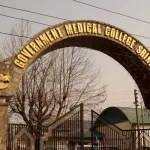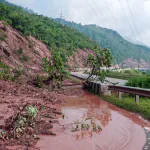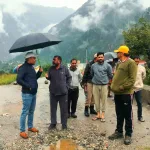The subcontinent of ours straddling along one of the most strategic pathways of the world, connecting both the occidental and oriental ways of life of the countries on either side of the Suez canal carries in its historical recess such personalities, places and objects which surprises everybody to no end. India stands among those comity of countries of the world which though having been ravaged by time and tide of events has tried to come up on top of the things , by either jettisoning those which didn’t go with its very being or else tried to amalgamate which were beneficial for the overall growth of its people. In a similar vein many personalities which came along with their occupational forces to conquer our country endeared themselves to the natives by their benevolent actions wholly of their own volitions thus becoming more native by nature. One such personality this write up of mine dwells upon is that of ‘William H Johnson’, a British surveyor on the rolls of ‘Great Trigonometric survey’ of India who later on went to wear many hats on the steam of his multifaceted personality.
My area of interest revolved around this particular British personality due to myriad reasons ranging from his being a high achieving mountaineer, surveyor, historian, philanthropist and finally an able administrator in the reign of Maharaja Ranbir Singh of Jammu and Kashmir coxswaining the difficult area of Ladakh as its governor during the most tumultuous times of the ‘Great game’. The high stakes ‘Great Game’ being played out in the near vicinity of Ladakh ,the cold desert which held key to the numerous mountainous passes and trails were suddenly catapulted into intense focus of both the then super powers of the world i.e Czarist Russia and England of 19th century each fearful of the other’s imperialist expansionism targeting the proverbial ‘Jewel in the crown’ viz India .
I happen to saunter by chance during my R&R (Rest and relief) days after my tenure at Siachen in August 1996 at Leh near the famous ‘Spituk monastery” and came across an almost decrepit looking building on the fields behind the famous monastery which to my amazement had a treasure of information stored in its foundations since the 1850s. One curiosity led to another when I came face to face with the facts that this sun-dried two storied structure was built of mud blocks for the former Governor of Ladakh William Henry Johnson who in the initial years of his sojourn in this cold desert used to come repeatedly to Spituk monastery to do the accounts of this stately religious center on yearly basis. It has been since then in use albeit with different functions that have changed over the years. A residence, a granary for the monastery, and a tool shed for the farmer working on the land around this monastery. A little about the maverick Governor of Ladakh cum surveyor cum avid mountaineer, William Henry Johnson shall be appropriate for me to take the readers on to the topsy-turvy route which hardly anybody worth his salt takes in his life time; only to carve out a niche which is worth envy for most of us mortals .William Henry Johnson was a British surveyor in the ‘Great Trigonometric survey of india’. He is noted for the first definition of the eastern boundary of Ladakh along the now famous ‘Aksai chin’ in the princely state of Jammu and Kashmir which has come to be called the famous ‘Johnson line’.
After retiring from the survey of India, Johnson was taken under the wings of the then Maharaja of Jammu and Kashmir Ranbir Singh and appointed as the governor of Ladakh, but not before doing a yeoman’s service for the state where he died in harness. He was born in India to an ordinance officer of the EIC (East India Company). Having been educated at Mussorie, he had a penchant for the nature and the vagaries the elements of weather built in him a stoic acceptance that later in his life in stood in good stead to him. Beginning his career as a surveyor in 1848 under the redoubtable captain Du Vernet in the North west Himalayan survey team, he came face to face with the full onslaught of the ‘Great game’ unleashed with full ferocity by both Czarist Russia and Victorian England and a time came when the nearest Russian outpost was just 20 miles from the outpost manned by the ‘Kashmir infantry’ of Maharaja Ranbir Singh of Jammu and Kashmir near Chitral.
After his senior Capt Du Vernet went to Assam on posting in 1852, he worked for some time doing route surveys in Punjab, River Chenab as also of Bhagirathi and Kanawar. In 1854, he ascended the snowy peak of ‘Nela pass’ which was a sterling feather in his cap of mountaineering.In 1855 he joined the newly formed ‘Kashmir survey party’ to survey the princely state of Jammu and Kashmir and was second –in –command to Thomas George Montgomerie, but took a leading role on account of Montgomerie being busy in Srinagar. For the princely state of Jammu and Kashmir, William Henry Johnson was a God send opportunity since it was he who led the survey forays into the Pir Panjal range, Kishan Ganga valley, Chandrabhaga valley, and later the Indus and Shyok river valleys. As if this was not enough he was the man who connected the ‘Kashmir triangulation’ with that of the North West Himalayas. Starting in 1862, Johnson worked from Leh in ladakh, surveying all the way to the Chinese frontier. He surveyed the ‘Chang chenmo’ valley and the plateau north to it. Being unstoppable as his breed was, he further took his deep forays into the now famous ‘Khotan’ which garnered him notability as well as controversy.
But the most befitting tribute to his ‘never say die attitude’ and feeding his appetite of dangerous liaisons was his deepest foray into the area of ‘Khotan’ (now in Chinese Turkestan) which coincided with the collapse of Chinese rule over there in the year 1863.The then governor of Ladakh Mehta Mangal sent out a small force of ‘Kashmir Infantry’ to Shahidullah’, a strategic point between the Karakorums and the Kunlun mountains and constructed a chauki (police post). In May 1865, Johnsonwas commissioned to survey the Kashmir series ‘beyond and to the north of chang chenmo valley. He set out two months later for this expedition with a party consisting of 50 coolies (porters),an attendant,5 mules,6 horses and a Jammu and Kashmir trooper. He quickly went over to the heretofore unexplored territory of Aksai chin. According to the scholar of international fame, John Lall , Johnson maintained an average speed of 19.2 miles a day through the barren country at heights between 15,000 to 19,500 feet . What a creditable feat considering the primitive equipment and stores at his disposal about 150 years ago. He further spent 20 days at the source of the Karakash River doing surveys and recording his findings which till date have a bearing on the present day Sino-Indian relations which are on a nosedive since the Galwan clash in May 2020. As per Johnson the north-eastern boundary of Kashmir and recommended by John Charles Ardagh , the official boundary of India abuts chinese Xinjiang and TAR(Tibetan autonomous region). The ‘Ardagh –Johnson’ line was one of the 3 boundary lines considered by the British Indian government, the other two being the ‘Macartney-MacDonald line’ and a line along the Karakorum range. The ‘Ardagh-Johnson’ line represented the ‘forward school’that wanted to advance the boundary as north as possible as a defense against the Russian imperialistic designs.
Well not going into the semantics of the strategies that denoted these lines on the terra firma of Indo-China border and reverting to the Johnson house at Leh, it is worth mentioning that this double storied mansion was redesigned to become a museum to house the works of Johnson on the first floor and a library on the ground floor. An outdoor kitchen and dry toilet was added later on to keep the mansion in a running condition and not to fall on bad days as it happened few years ago. With the proposal to grow winter vegetables around the house, consumption, production and waste management became a much more viable option to exercise. The structure was redone using sun-dried bricks and lime over the external walls while keeping the positions of the windows same. A ribbon window crowns the building to assist with the lighting inside the gallery. In fact it is a travesty of justice that despite Ladakh coming into the being as a separate entity governed by Delhi directly; heritage conservation efforts leave much to be desired.
When Buddhist monasteries get funding from a plethora of NGO’s worldwide as also get adequate radio coverage when vandalized from agencies like the RFA (Radio free Asia), why is it that an equally important heritage building made solely for an individual who used to look after the official accounts of Spituk monastery was few years back lying in a descript condition? With host of home stays erupting like anything in Ladakh and with active assistance of ‘Airbnb’ it is felt that this excellent memorial be put into the tourist circuit connecting it with Spituk monastery which is just few yards from it so as to give it the due importance it deserves . Since ‘Memorials become relics (dead) if they do not stir our modern conscience’.
(The writer is a retired army officer and can be approached on his email…[email protected])





